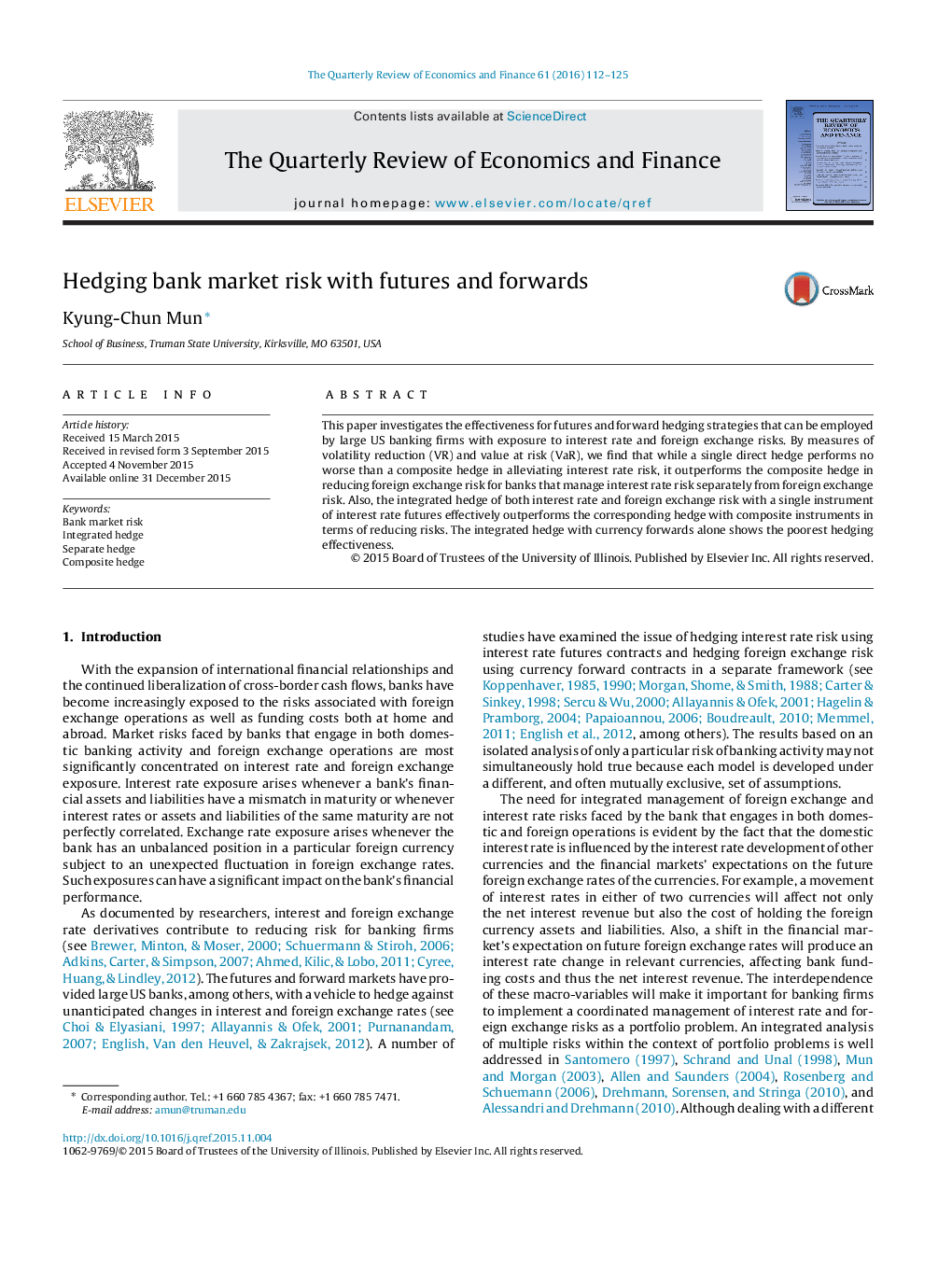| Article ID | Journal | Published Year | Pages | File Type |
|---|---|---|---|---|
| 981990 | The Quarterly Review of Economics and Finance | 2016 | 14 Pages |
•Single direct hedge outperforms the composite hedge in reducing foreign exchange risk for banks that manage interest rate risk separately from foreign exchange risk.•Integrated hedge of both interest rate and foreign exchange risk with a single instrument of interest rate futures effectively outperforms the corresponding hedge with composite instruments in terms of reducing risks.•Integrated hedge with currency forwards alone shows the poorest hedging effectiveness.
This paper investigates the effectiveness for futures and forward hedging strategies that can be employed by large US banking firms with exposure to interest rate and foreign exchange risks. By measures of volatility reduction (VR) and value at risk (VaR), we find that while a single direct hedge performs no worse than a composite hedge in alleviating interest rate risk, it outperforms the composite hedge in reducing foreign exchange risk for banks that manage interest rate risk separately from foreign exchange risk. Also, the integrated hedge of both interest rate and foreign exchange risk with a single instrument of interest rate futures effectively outperforms the corresponding hedge with composite instruments in terms of reducing risks. The integrated hedge with currency forwards alone shows the poorest hedging effectiveness.
